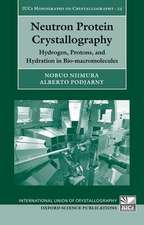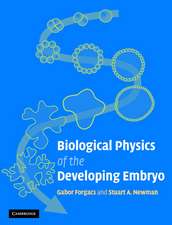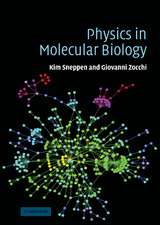Advances in Chemoreception: Volume I Communication by Chemical Signals
Editat de James W. Johnstonen Limba Engleză Paperback – 25 apr 2012
Preț: 399.12 lei
Nou
Puncte Express: 599
Preț estimativ în valută:
76.38€ • 79.45$ • 63.06£
76.38€ • 79.45$ • 63.06£
Carte tipărită la comandă
Livrare economică 14-28 aprilie
Preluare comenzi: 021 569.72.76
Specificații
ISBN-13: 9781468471571
ISBN-10: 1468471570
Pagini: 428
Ilustrații: XII, 412 p.
Dimensiuni: 170 x 244 x 22 mm
Greutate: 0.68 kg
Ediția:Softcover reprint of the original 1st ed. 1970
Editura: Springer Us
Colecția Springer
Locul publicării:New York, NY, United States
ISBN-10: 1468471570
Pagini: 428
Ilustrații: XII, 412 p.
Dimensiuni: 170 x 244 x 22 mm
Greutate: 0.68 kg
Ediția:Softcover reprint of the original 1st ed. 1970
Editura: Springer Us
Colecția Springer
Locul publicării:New York, NY, United States
Public țintă
ResearchDescriere
Research on the chemical senses has been growing at a remarkable rate over the last decade. This growth has greatly expanded our understanding of the electrical properties and ultrastructure of chemosensory organs, of the role of chemoreception in the control of behavior, of the organization of higher centers in the chemosensory pathways, and of the chemical constituents of mixtures of biologic significance. But one area where advances have been especially impressive is concerned with the properties of pheromones and substances with similar biologic effects. Pheromones are compounds, produced by certain animals, which have the effect of inducing one or more specific responses within members of the same or closely related species. Some of these substances-the "primer" pheromones-act on the endocrine system, probably through the central nervous system. The pregnancy block induced in mice by the odor of strange males is a striking example. Others, such as "signalling" or "releaser" pheromones, elicit an immediate behavioral response. Sex attractants are prominent examples of this group. While the chemical identity of these compounds is known, in a relatively few cases (and these, mainly in insects) we now have extensive information about their impact on the receiving organism at the receptor, physiologic and behavioral levels.
Cuprins
1 Introduction.- 2 Defining “Communication”.- 3 Purity, Identity, and Quantification of Pheromones.- 4 Chemical Communication in Insects: Behavioral and Ecologic Aspects.- 5 The Role of Chemicals in Termite Communication.- 6 Responses of Olfactory and Gustatory Receptor Cells in Insects.- 7 Researches on Trail and Alarm Substances in Ants.- 8. Chemical Communication in Fish.- 9 Chemical Perception in Reptiles.- 10 The Role of Pheromones in Mammalian Reproduction.- 11 The Role of Skin Glands in Mammalian Communication.- 12 Man’s Ability to Perceive Odors.- General Discussion (Chapters 8-12).- Communication by Chemical Signals (Conclusion).













